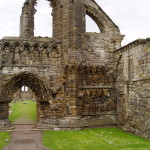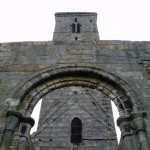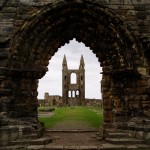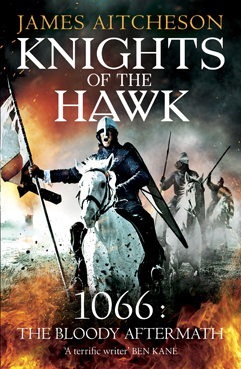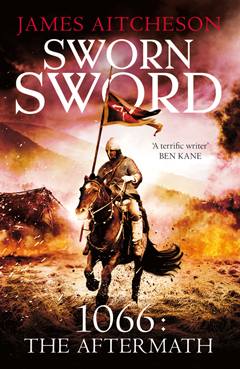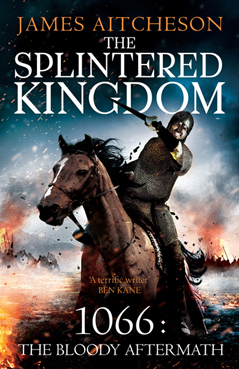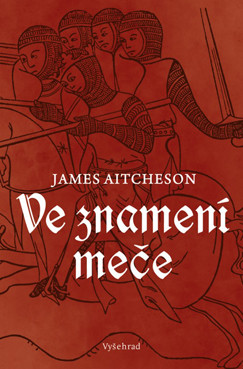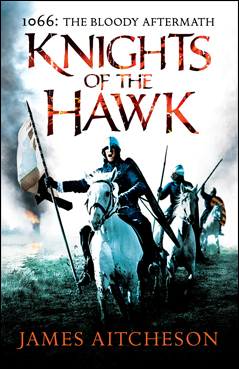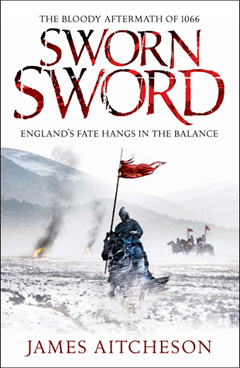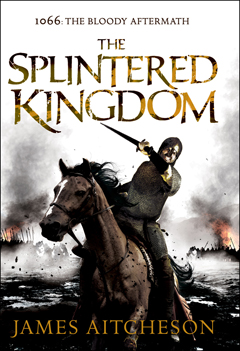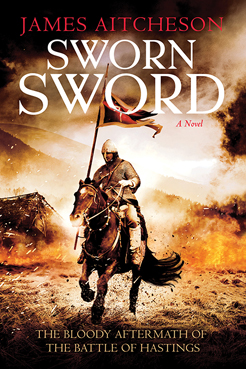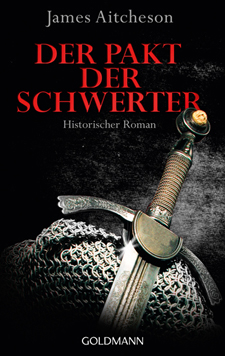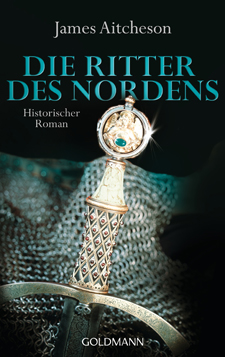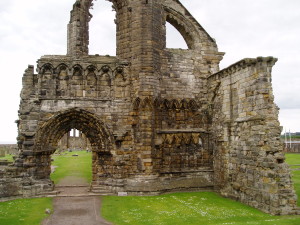
The ruins of St Andrews Cathedral. At 119 metres (391 feet) in length, it’s the largest church ever to have been built in Scotland.
As well as giving a paper of my own on representing the Middle Ages in fiction, I also had the chance to meet and share ideas with historians and people from a wide range of other academic disciplines whose work involves the medieval in one way or another.
I was also privileged to be able to attend the lecture that closed the conference, which was delivered by Nobel Prize-winning poet Seamus Heaney in what was probably one of his final public appearances before he died just a couple of months later.
Five of the keynote lectures, including Heaney’s, were recorded on video and have now been posted on the conference website for anyone interested in getting a taste of what the conference was all about. The five lectures are:
Saints’ cults and celebrity: the medieval legacy
James Robinson (National Museums Scotland)
Adapting medieval romance
Felicitas Hoppe (author and translator)
The worlding of medievalism: past and present in the early anthropocene
Bruce Holsinger (University of Virginia)
European ethnicity: does Europe have too much past?
Patrick Geary (Institute for Advanced Study, Princeton)
“Feinyit Fablis and Ane Cairfull Dyt”?: a Reading with Commentary
Seamus Heaney (Nobel Prize-winning poet)
The week following the conference, the British Academy in London held a special event with Patrick Geary and broadcaster, actor and writer Terry Jones, chaired by Dr Chris Jones from the University of St Andrews, in which they reprised their presentations and discussed the continuing relevance of the Middle Ages. The video of this event is also now online on the British Academy website.
All of the lectures are well worth watching if you have the chance. Between them they give a fairly good idea of the variety of subjects that were discussed over the four days, exploring how ideas and misconceptions of the Middle Ages have informed, and are reflected, in disciplines as wide-ranging as literature, politics and even climatology, which was the focus of Bruce Holsinger’s particularly excellent talk – just one of my many highlights of the conference.
In case you missed them the first time around, catch up with Part One and Part Two of my report from “The Middle Ages in the Modern World”.
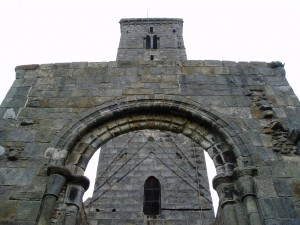
The 12th-century tower of St Rule (St Regulus), in the grounds of St Andrews Cathedral.
While many of these and other dramatisations dress themselves in the lavish costumes, scene-dressing and CGI that are the hallmarks of the so-called “sexy historical”, the content is often much less glamorous. The main focus of the discussion revolved around the prevalence and degrees of vice, debauchery and violence (including sexual violence) depicted in these programmes, their portrayal of women, and the ways in which they make use of the commonly held belief that the Middle Ages were a period in which life was “nasty, brutish and short”.
Clearly this is a very skewed and limited vision of the period, and yet it seems to be one that the US-based cable networks such as HBO, Showtime and Starz, who commission and in large part fund these series, have hit upon as a means of drawing in viewers. A similar formula can also be found in the treatments afforded to The Tudors and The Borgias. Why is it that this recipe has recently found success, and should we be concerned that the Middle Ages are getting such a bad press?
It should be noted that this new brand of “dirty medievalism” is, by and large, the preserve of the cable channels. Indeed in the UK, the BBC’s dramatic uses of the Middle Ages have tended to be oriented more towards family entertainment, with series such as Merlin and Robin Hood offering a very different depiction of medieval life: one that is gentler and interspersed with humour. Which of the two approaches, if either, presents a better reflection of the medieval reality?
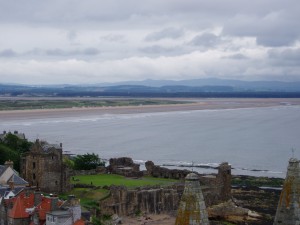
St Andrews Castle (foreground), with West Sands Beach and the North Sea beyond.
Nevertheless, I’d hope that readers of my novels come away with the sense that kinship, duty and love did matter to medieval people, just as they matter to Tancred and his allies, and that there was honour to be found in their world. While treachery, backstabbing, power games and violence abounded, it seems strange to argue that these facets were peculiar to the Middle Ages, or that they were the main distinguishing features of that period. For that reason, as entertaining as these recent TV dramatisations are, there remains for some a nagging sense that, in limiting their vision, they do the Middle Ages a disservice.
Needless to say it was a fascinating discussion – one of many over the course of the conference. Even now, more than a week after coming back, I’m still working my way through and absorbing the various notes I made. I hope to share some more of my findings from my time in St Andrews in the not too distant future!
If you missed it last week, catch up with Part One of my report from “The Middle Ages in the Modern World”.
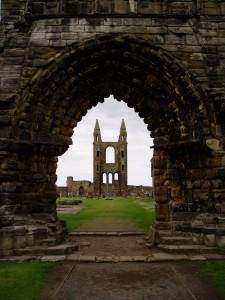
The ruins of St Andrews cathedral. At 119 metres (391 feet) in length, it’s the largest church ever to have been built in Scotland.
Being a historical novelist is all about bringing the past to life for a modern audience, so this conference seemed like the ideal chance to meet and share ideas with like-minded people from across the academic community who also happen to have the same love of the Middle Ages. And so I found myself in the company of 175 other delegates from 15 countries – some having travelled from as far afield as Australia, Korea and Canada – discussing how various aspects of the Middle Ages are represented today in literature, music, film, TV, climate change science and almost every other field imaginable.
I was there to deliver a paper entitled Representing the Middle Ages in Fiction, drawing upon my own experiences to discuss ways in which novelists might go about presenting their subjects in a historically responsible way. How rigorous should novelists be in their research? Can and should we hold them up to the same standards as professional historians? Accepting that a certain amount of invention and distortion is unavoidable in writing historical fiction, is there a certain point at which too much becomes unacceptable, and it descends into fantasy? What can historical fiction offer that non-fiction histories alone might ordinarily struggle to do?
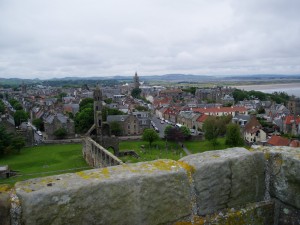
The town of St Andrews, as seen from the top of the 12-century St Regulus’ Tower, which stands amidst the cathedral ruins.
I also had the good fortune to meet and discuss writing with Felicitas Hoppe, a German novelist and recent winner of the prestigious Georg Büchner Prize – one of the most prestigious German-language literary awards – who gave a plenary lecture about the challenges of adapting medieval romances into fiction. Other brilliant lectures included James Robinson from the National Museum of Scotland speaking about the similarities between the cults of medieval saints and those of modern celebrities; Bruce Holsinger from the University of Virginia talking about how an extract from the Icelandic sagas has found its way into debates about global warming; and Patrick Geary from the Institute of Advanced Study, Princeton, examining how medieval ideas of European ethnicity still have political currency today.
Those were just a few of the highlights from the conference. More on those, and on the rest of my findings from my time in St Andrews, in Part Two of my report, coming soon!

